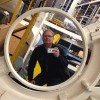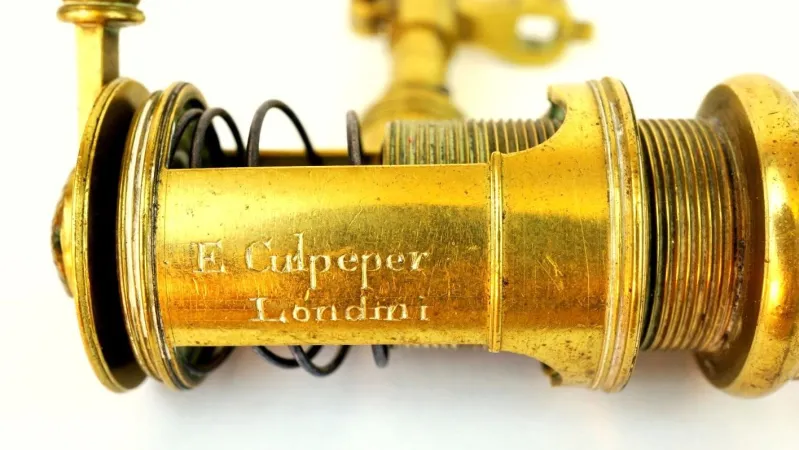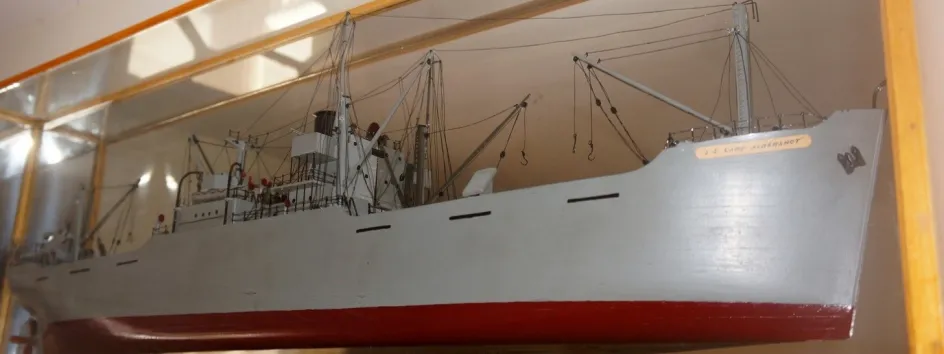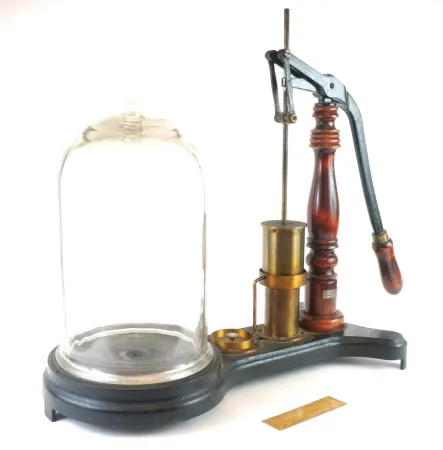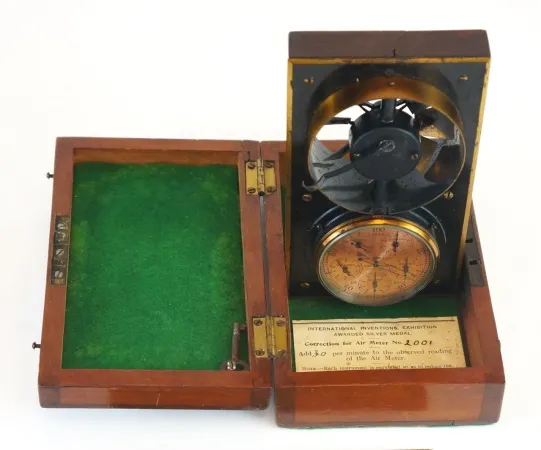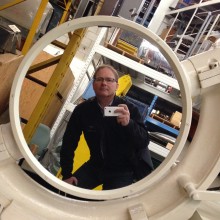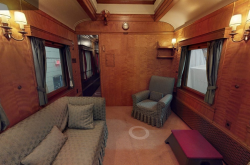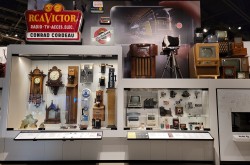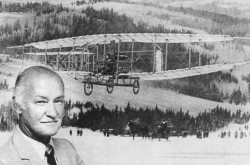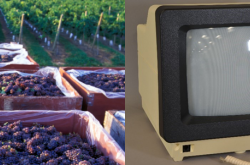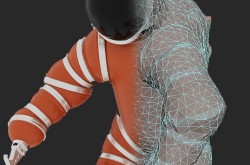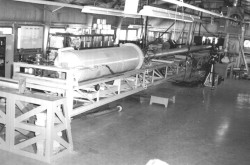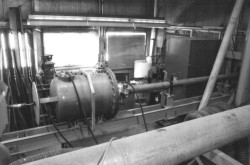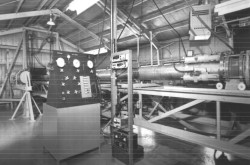A peek inside the mind of a collector

A biochemist, avid cross-country skier, and former science budget analyst speaks on the joys of collecting, the lessons learned, and the importance of preserving material culture.
Murray Shaw’s passion for science and scientific instruments was evident the first time we met three years ago in his Ottawa home. Scientific and navigational instruments from the seventeenth century to the 1920s were tastefully displayed in period cabinets in several rooms throughout the house. Growing up in half-a-dozen cities all across Canada, Shaw’s interest in science developed from a young age. His parents encouraged an education in science which eventually took him to the Universities of Waterloo, Aix-Marseille, and Ottawa for two doctorates and an MBA. Over the years, his collecting urge was ever-present!
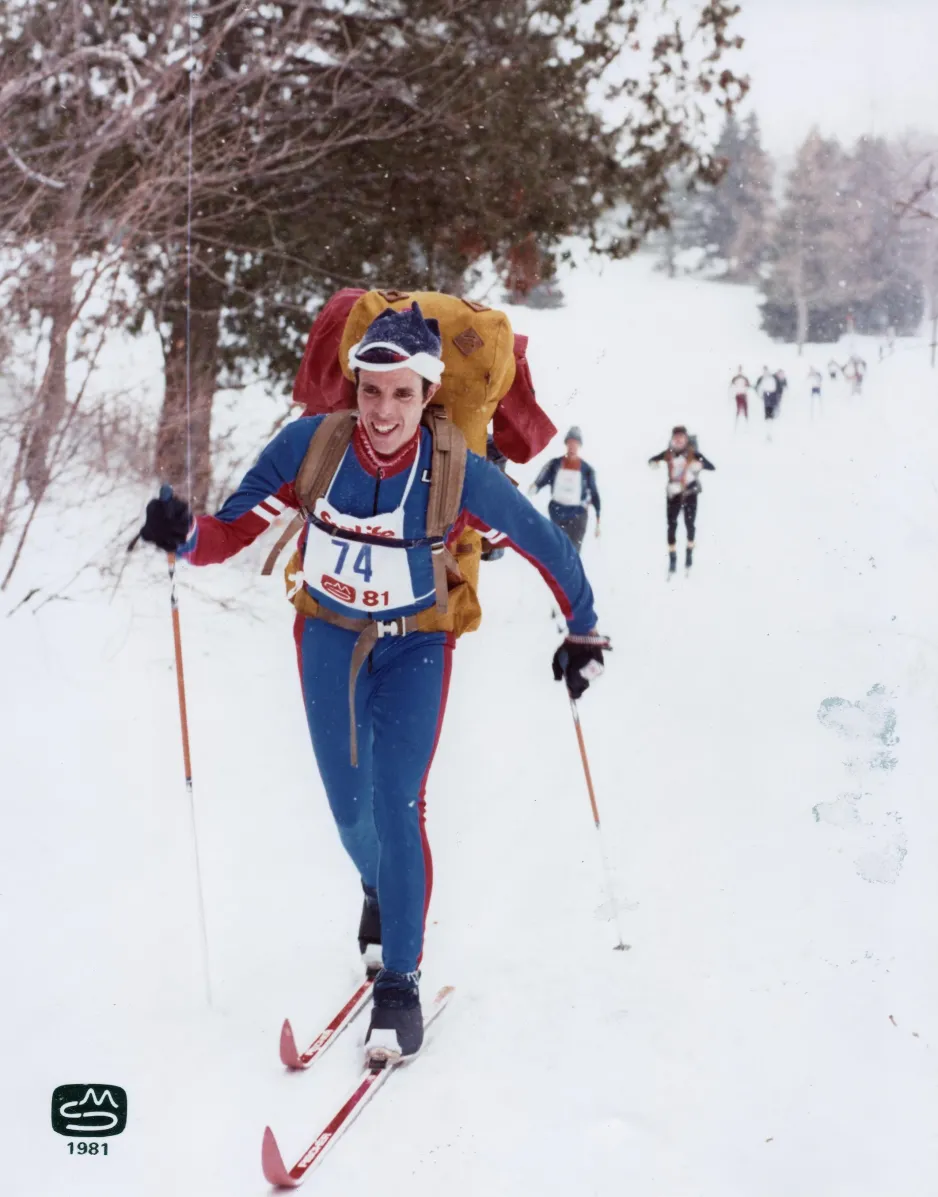
Shaw in his younger days, as a Coureur de Bois during the 1981 Gatineau Ski Loppet.
An avid cross-country skier, Shaw was President of the Canadian Ski Marathon and recipient of several Coureur de Bois medals, a marathon runner and wilderness canoeist. His athletic endeavours and career as science budget analyst and business strategist provided plenty of opportunity for country-wide travel.
Representing over 40 years of informed collecting throughout Canada, Shaw used and applied his knowledge of science and laboratory practises to collect instruments for their uniqueness, type, manufacture, condition, provenance, and rarity.
The collection, which assumes a distinctive Canadian character, consists of balances, scales, lab ware, microscopes, and mechanical calculators, as well as electrical, meteorological, medical, and surveying instruments.
This scientific instrument collection was donated to Ingenium Museums in late 2017. It will be safely preserved in the new Collections Conservation Centre, currently under construction next to the Canada Science and Technology Museum in Ottawa.
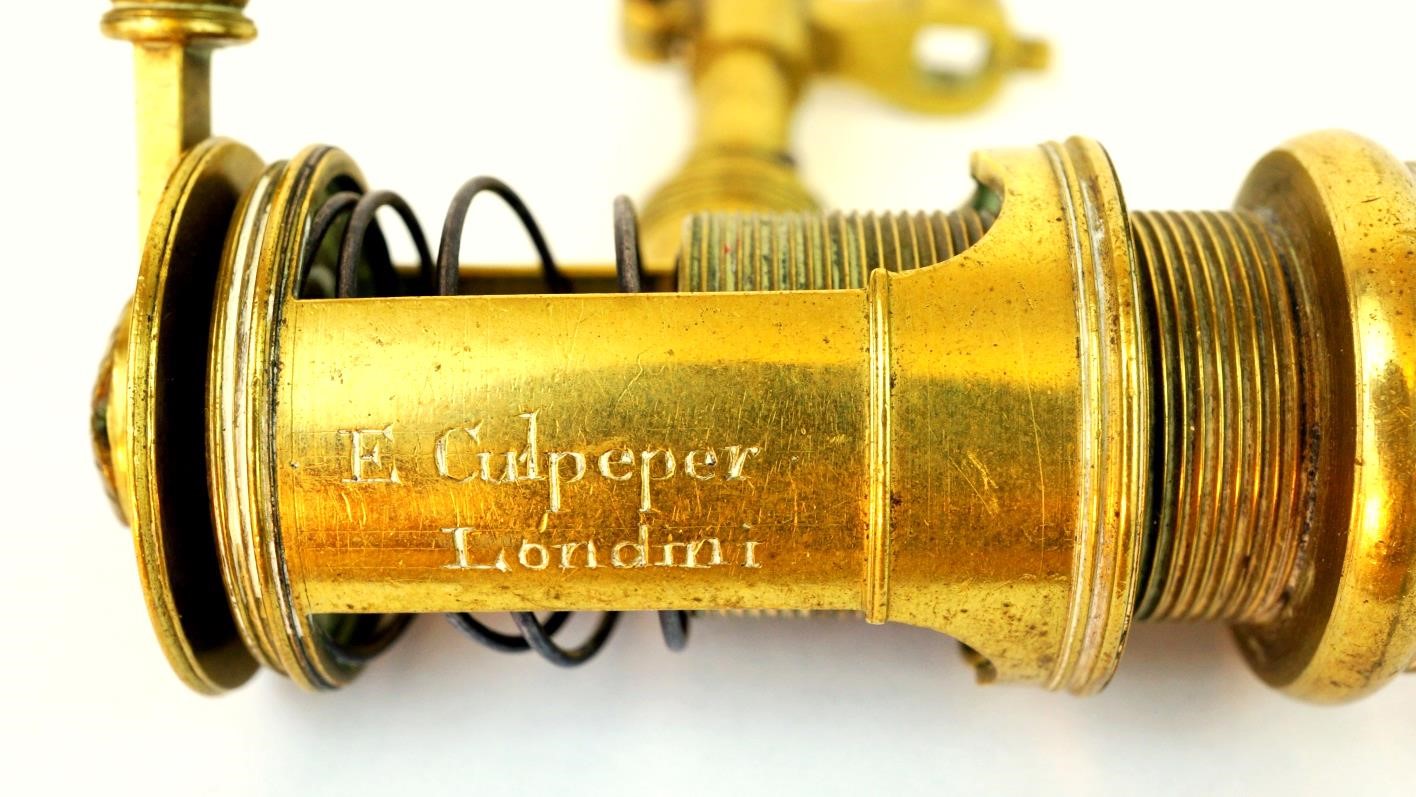
Culpeper Microscope, early 18th century. A screw barrel microscope signed by instrument maker Edmund Culpeper (1660-1738), who is credited with improvements to optical and mechanical stages of microscopes such as tripod mounted compound microscopes. Artifact no. BC0002

How old were you when you discovered that science is what you wanted to do?
Murray Shaw: In grades 12/13 when my chemistry teacher made me completely responsible for teaching a fellow student who needed a decent mark in grade 13 chemistry. That year of teaching got my student a solid B+, and me the top chemistry mark in Ontario; this hooked me on chemistry for life.
Growing up, did your family encourage the sciences?
From my earliest days, my father characterized me as “an inexhaustible source of useless information.” This innate curiosity naturally gravitated toward things I could quantify, mostly in the sciences.

Baby London Microscope, ca. 1924. An example of a portable field microscope to study nature, pond life, etc. Popular in the 1920s and 1930s, this model, the ‘Baby London’ by R. & J. Beck Ltd., was listed as a new instrument in the 1924 Journal of Scientific Instruments.
Not all scientists are collectors. When did you catch the collecting bug?
I was an avid stamp collector as a child, but managed to make a clean break from that obsession by selling my collection. When doing post-doctoral work at the University of Ottawa in 1972, however, I saw a beautiful microbalance being put into the trash once a new electronic scale had replaced it. Carrying its 40 pound weight 2 km home from the lab on my shoulder reignited my dormant desire to collect beautiful things, and focused it on scientific instruments.
What satisfaction does collecting bring you?
Living in a disposable, mass production, plastic age, it is an absolute joy to find and preserve the hand-crafted, artistically beautiful objects that once met the needs of Canadian professionals of all kinds. The materials (mahogany, brass, ebony…) and the attention to functional detail make them a pleasure to see and to handle.
In your many collecting travels across Canada, who impressed you the most?
The collector I most respect is Duncan Robert who moved to Canada from the far East and started collecting scientific antiques. He assembled an astonishing, museum-quality collection through his many travels, vast knowledge of scientific instruments, intimate understanding of the Canadian collecting business, and frequent attendance at auctions. The Murdoch Mysteries television series derives much of its authenticity from use of antique artefacts rented from him.
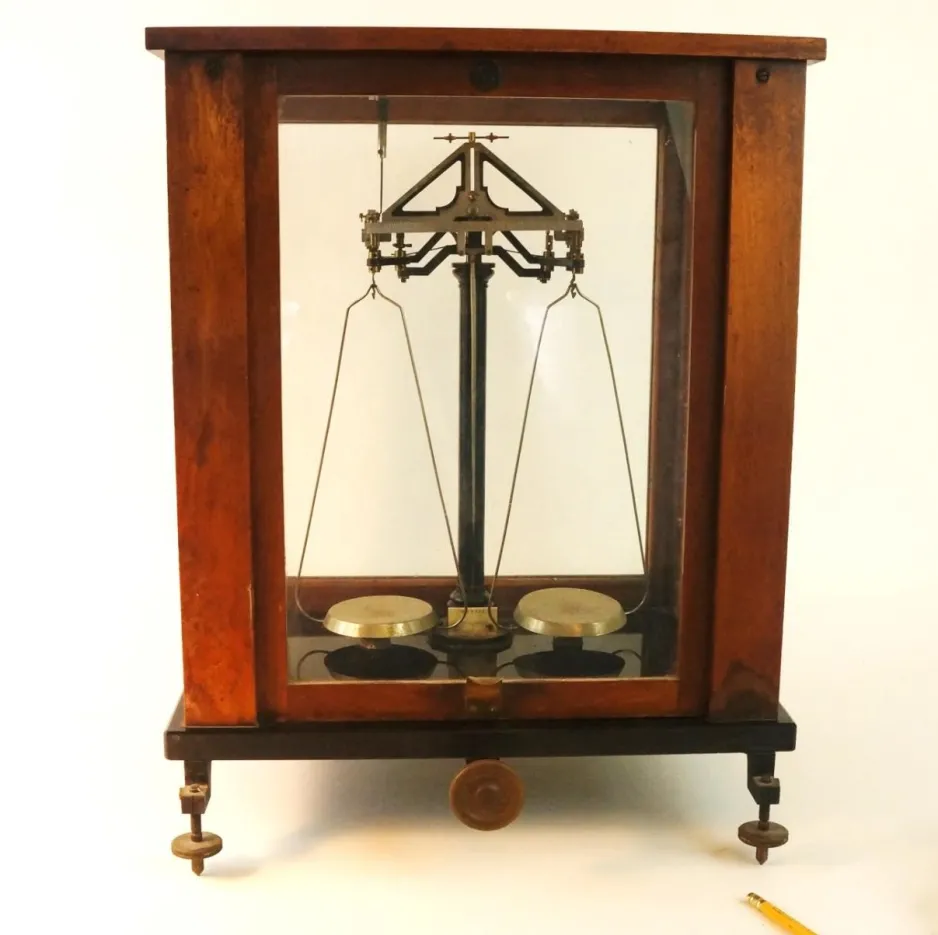
Analytic Balance, ca. 1900. An analytic balance by Bausch & Lomb Ltd., used to measure the mass of substances in a laboratory setting. This balance is labelled “The Topley Company, Ottawa Canada”, a company founded by W. J. Topley (1845-1930), a business partner to the well-known Montreal photographer William Notman. Originally an Ottawa photographic studio which opened in 1875, the Topley Company was famous for portraits of leading figures of the time.
Tell us about the dinner party trick you once did, when you asked guests to weigh their signatures?
Since my best balance has a precision of 0.01 milligrams, I found that it amused my friends to weigh a piece of paper before and after each of them signed in pencil and then show them the significant differences in the weight of their signatures.
What about the one that got away!?
Walking from downtown Vancouver to the airport in 1986, on my way to the month-long Commonwealth Study Conference in Australia, I happened to see four spectacular microscopes for sale in a used-furniture store window. With only minutes to spare and no way of paying thousands of dollars on the spot, I had to leave them behind. Over 30 years later, they remain ‘the ones that got away.’
What role does research play on your collecting?
Until recently, you could say that I was simply a hoarder of scientific artefacts that appealed to my aesthetic senses rather than a true collector. Only in the last few years, using exhaustive research on the internet to create detailed documentation to accompany photos of the collection, have I really come to appreciate the full history they represent.
What collecting advice would you give to your younger self?
Don’t let yourself be carried away by an obsessive drive to collect anything that takes your fancy. Pick a few areas of specific interest; research their history well using the ever-increasing power of the internet, - and attempt to find exceptional pieces that played key roles in that history. Better one well-documented, outstanding piece than a clutter of moderately interesting, shiny objects.
Artifact Gallery
A selection of artifacts from the 50 object collection of scientific instruments donated to Ingenium Museums by Mr. Shaw in late 2017.
Additional Readings:
The Canadian Conservation Institute advances and promotes the conservation of Canada's heritage collections through its expertise in conservation science, treatment and preventive conservation.
Heritage Conservation encompasses the identification, protection and promotion of things that are important in our culture and history.
Why we collect Curator Sharon Babaian reflects on the purpose of collecting.
Acknowledgements:
Thank you to Mr. Murray Shaw for the gracious donation of a collection of well cared for scientific instruments to Ingenium Museums in late 2017.

